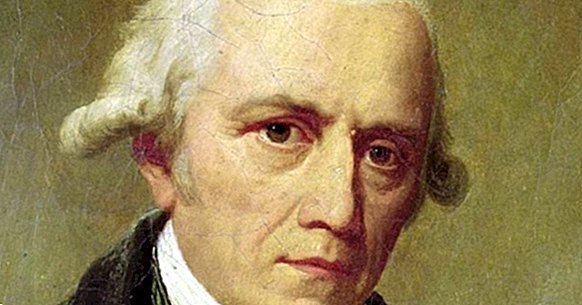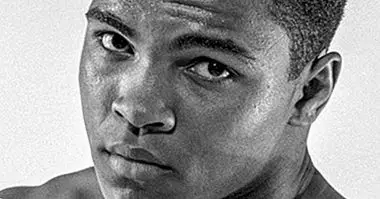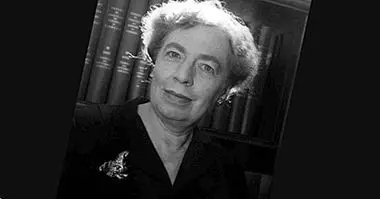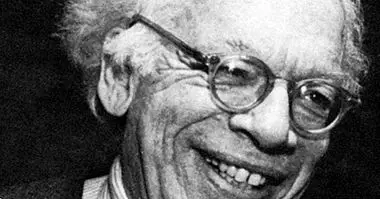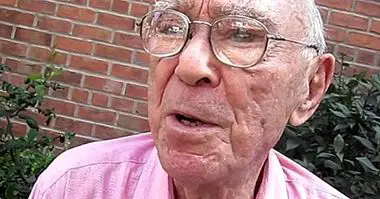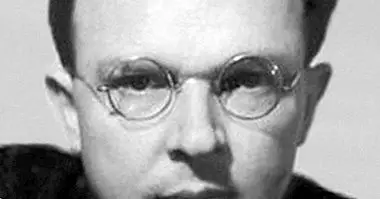Jean-Baptiste Lamarck: biography of this French naturalist
If we talk about evolution probably the first name that comes to mind is that of Charles Darwin. But nevertheless Darwin was not the only great author who worked on this aspect , existing other authors with a different consideration of the evolution of the species and that even served as inspiration to him.
The most outstanding of all, despite the fact that with the passage of time his ideas were becoming obsolete and losing popularity in favor of other theories with greater scientific support, is Jean-Baptiste Lamarck.
This man, one of the first pioneers in separating the development of species of faith, the father of the term biology as we know it and is the author of one of the first evolutionary theories really coherent and integrated. Understanding your life can help us greatly to value your thinking, which is why throughout this article let's sketch a short biography of Lamarck , as well as its scientific legacy.
- Related article: "The Lamarck Theory and the evolution of the species"
Brief biography of Jean-Baptiste Lamarck
Jean-Baptiste Pierre Antoine of Monet cavaliere di Lamarck, better known as Lamarck, was born in the village of Bazentín (in the Picardy region, Somme) on August 1, 1744. Son of Philippe Jacques de Monet de La Marck and Marie-Françoise de Fontaines de Chuignolles, he was the eleventh son of a noble family dedicated to the military .
His father decided to enroll young Lamarck in a Jesuit seminary in order to dedicate his life to the priesthood. The young man would remain with them and would receive an education and training in different subjects within the ecclesiastical career. However, when his father died, in the year 1759, Lamarck decided to leave the habits and enlist in the military establishment.
Military service and subsequent studies
When he turned seventeen, in 1761, he acquired a horse and enlisted in the army. His military career was short but intense, being promoted to officer during the first year in the army and participating in the Seven Years' War. He became a gentleman. However in 1768 he suffered a serious neck injury that, after generating escrófula (infection in the ganglia of the neck that generates great inflammation) would force him to finish his military career.
He moved to Paris, where he would initially live on the pension and paternal inheritance with his brother Philippe François. There he started studying music, but finally decided to work as an accountant.
After that, he decided to study medicine for four years , a period in which he would also receive training in what would become one of his great passions: botany. It would be in this and in the natural sciences where he would show greater interest, specializing in his study and participating in the herborisations studied by Jean-Jacques Rousseau.
Botany and the rise of its prestige
Such was his interest that he would carry out an important research work based on the observation of the plants, inventing in the process the so-called dichotomous method in order to systematically classify the flora of France. This work would be published in 1779 under the name "Flore françois", thanks to Count Georges Louis Buffon. Over time and largely thanks to the popularity achieved thanks to this publication He was appointed a member of the Academy of Sciences .
Lamarck was contacted by Buffon in 1780 to lead a mission through Europe to increase the botanical collection of the Garden du Roi (of the king), which he carried out successfully. The author since then worked as a botanist in the garden until 1793 in what is known as Jardin du Roi (del Rey). At this time he would marry Marie Annie Rosalie Delaforte, with whom he would have five children and unfortunately died in 1792.
That same garden, with the arrival of the French Revolution and largely thanks to its influence, it would be transformed into the National Museum of Natural History . In him he would be named by the Committee of Public Instruction as Director or professor of the department of inferior animals.
This department was in charge of the study of insects and other animals that today we call invertebrates. In fact this same concept is created by him to define animals that have no vertebrae: throughout his studies he would elaborate the main subdivisions still existing today.
In addition to that, also coined the term biology to identify the science that studies living beings . That year 1793 would also marry for the second time, this time with Victoire Charlotte Reverdy, with whom she would have two more children. However, this second wife died a few years later, in 1797. A year later she would contract her third nuptials with Julie Mallet.
Besides starting teaching, during this time he would elaborate what would be one of his most recognized works, the "Natural History of the invertebrates", which would consist of different volumes that were developed between 1815 and 1822. And in the studies that realized during this time is the germ that would end up producing his theory of evolution.
His work in meteorology
Another branch in which he started working was meteorology , being a pioneer in assessing that the prediction of time was possible through probabilistic methods. In this area he believed that understanding what generates atmospheric alterations makes it possible to predict the behavior of the climate with certain accuracy.
Some of the possible causes of the atmospheric phenomena that he proposed were the influence of the Sun and the Moon, as well as the rotation of the Earth. However, in this sense it published several meteorological Anuario, in which diverse errors were found and that in fact their less exact works are considered. It would be then when I would begin to suffer some discredit.
Lamarckismo
Although initially Lamarck considered that the alive beings did not undergo any change, with the time and the investigation it was sheltering the idea that there really was an evolutionary process : living beings have not been created and remain immutable but have been varying from simpler beings that precede them.
Likewise, it would consider that the organs and characteristics of the different beings are atrophied or developed according to their use, and that the characteristics acquired by the predecessor organisms that are useful are transmitted to their offspring (the best known example being the neck of the giraffes). Consider that it is the habit and the need that causes the organisms to be modified.
Your ideas about evolution and inheritance of acquired characteristics they saw the light in Zoological philosophy, published in 1809, and that supposes the first theoretical body that reunites the knowledge of the time with regard to the evolution. This document was and continues to be of great historical relevance, allowing the debate at a time when biology was still strongly associated with creationism.
- Maybe you're interested: "The theory of biological evolution"
Fall in disgrace, last years and death
However, it also caused him suffering: he offered a copy to Napoleon Bonaparte, who would reject him in public. Also at this stage his health began to decline, and also had several conflicts and disputes with various authors that gradually diminished his prestige: criticized the work of Lavoisier are regarding the operation of fluids , his works were dismissed as unscientific and biased and were said to overestimate his arguments.
He also became deeply antagonistic with the biologist Georges Cuvier, who enjoyed very good public consideration and who started from a more empirical and experimental basis, describing Lamarck's theories as nonsense.
Unfortunately for Lamarck, over the years his numerous contributions in the matter of the evolution were being in discredit . From 1819 he went blind, having in fact to dictate some of his works to his daughters. In addition to this this time would die what was his third wife Julio Maillet. All this, together with the collapse of the author's lack of prestige, caused him to become impoverished and to end up getting sick.
His last years of life were spent in the care of his daughters, ignored and with hardly any recognition. His death occurred on December 18, 1829, at the age of 85, in Paris.
Despite the fact that Lamarck's theory of evolution has been outdated and surpassed by Darwin's and that in the last years of his life he was discredited and ignored, with the passage of time his ideas have been seen as an important advance in scientific knowledge from the time in which he lived and has served as a basis for multiple theories. In addition, although it is not so well known, they are concepts and classifications such as invertebrates, or the term of biology, in addition to contributing greatly to both the development of botany and zoology.
Bibliographic references:
- Dawkins, R. (1986). The Blind Watchmaker. Barcelona: Editorial Labor.
- Harris, L. (1981). Evolution. Genesis and revelations. Barcelona: Hermann Blume Editions.

